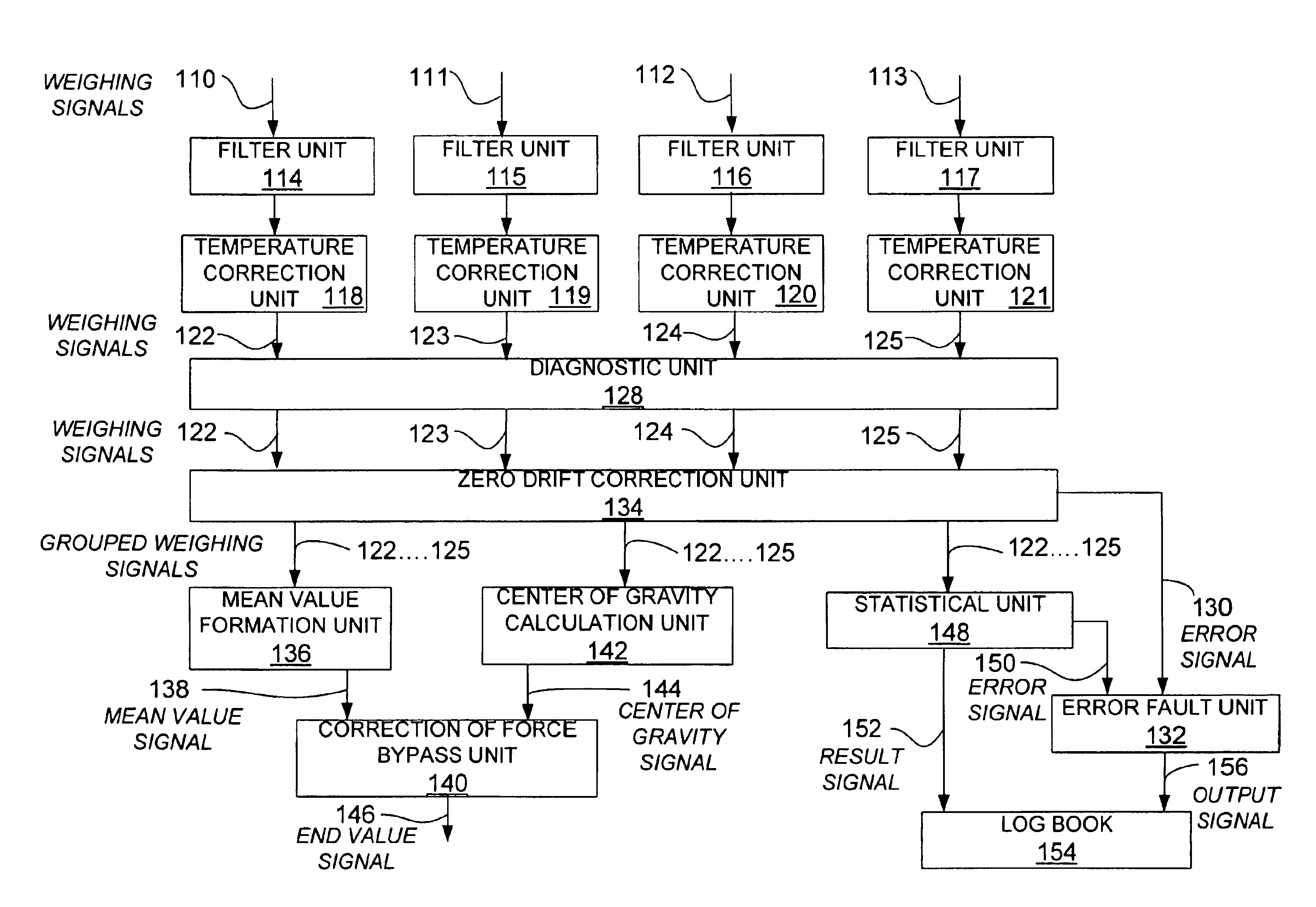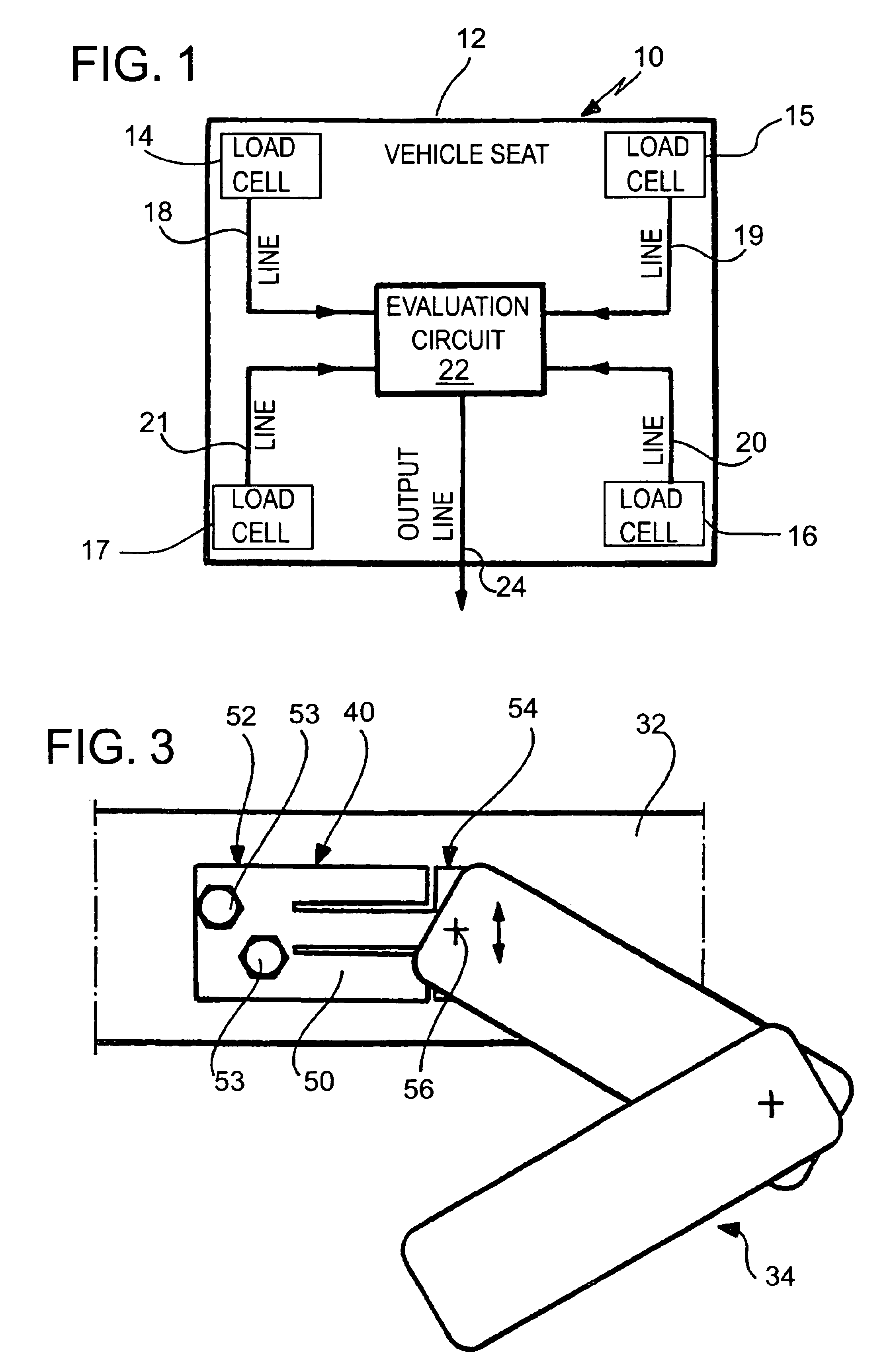Device and method for detecting and preprocessing weights acting on a vehicle seat
- Summary
- Abstract
- Description
- Claims
- Application Information
AI Technical Summary
Benefits of technology
Problems solved by technology
Method used
Image
Examples
Embodiment Construction
[0118]FIG. 1 schematically shows a device 10 according to the invention for detecting and evaluating a weight which acts on a vehicle seat 12 (only indicated here).
[0119]In the present example, the device 10 according to the invention comprises four loads cells 14, 15, 16 and 17, which are disposed in the region of the four corners of the sitting area of the vehicle seat 12.
[0120]The loads cells 14 to 17 are connected via signal lines 18, 19, 20 and 21 to an evaluation circuit 22, which receives and preprocesses the weighing signals supplied by the load cells. Once preprocessing has taken place, which will be described still further below, the evaluation circuit provides via a signal output line 24 an output signal for a downstream control circuit or the electronics of the vehicle, which assume(s) the further routing of the signal to the airbag control electronics, possibly in an additionally preprocessed form.
[0121]The signal output line 24 may be part of the vehicle's own signal b...
PUM
 Login to View More
Login to View More Abstract
Description
Claims
Application Information
 Login to View More
Login to View More - R&D
- Intellectual Property
- Life Sciences
- Materials
- Tech Scout
- Unparalleled Data Quality
- Higher Quality Content
- 60% Fewer Hallucinations
Browse by: Latest US Patents, China's latest patents, Technical Efficacy Thesaurus, Application Domain, Technology Topic, Popular Technical Reports.
© 2025 PatSnap. All rights reserved.Legal|Privacy policy|Modern Slavery Act Transparency Statement|Sitemap|About US| Contact US: help@patsnap.com



